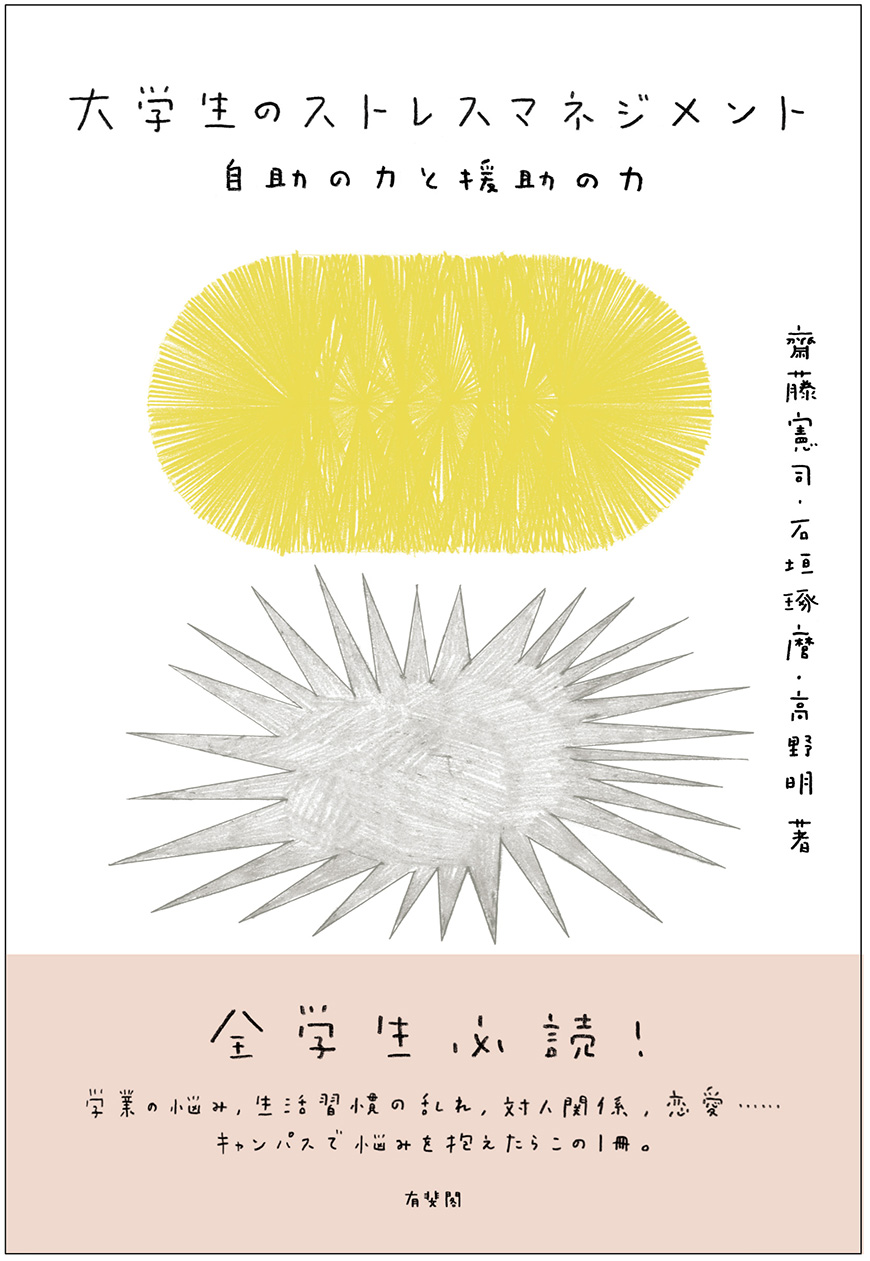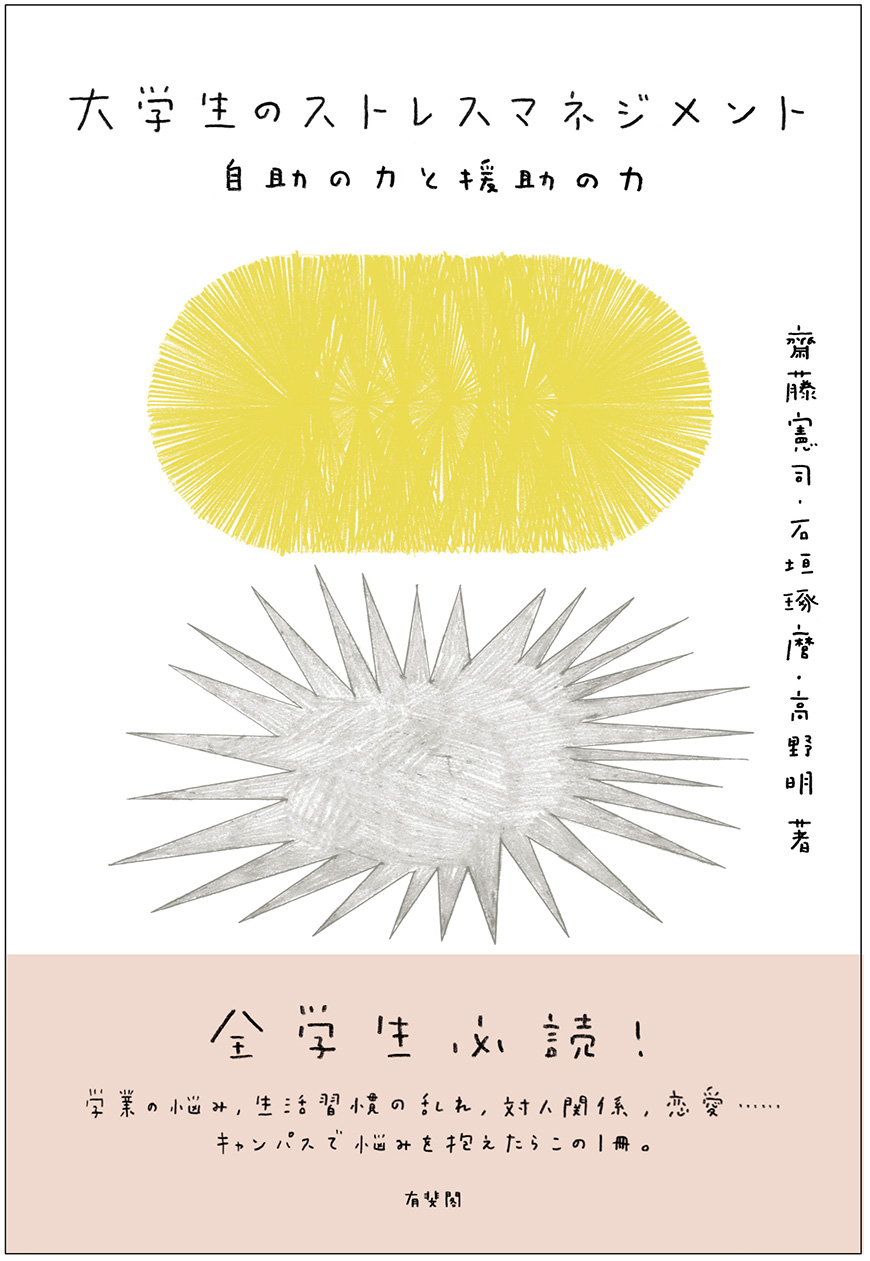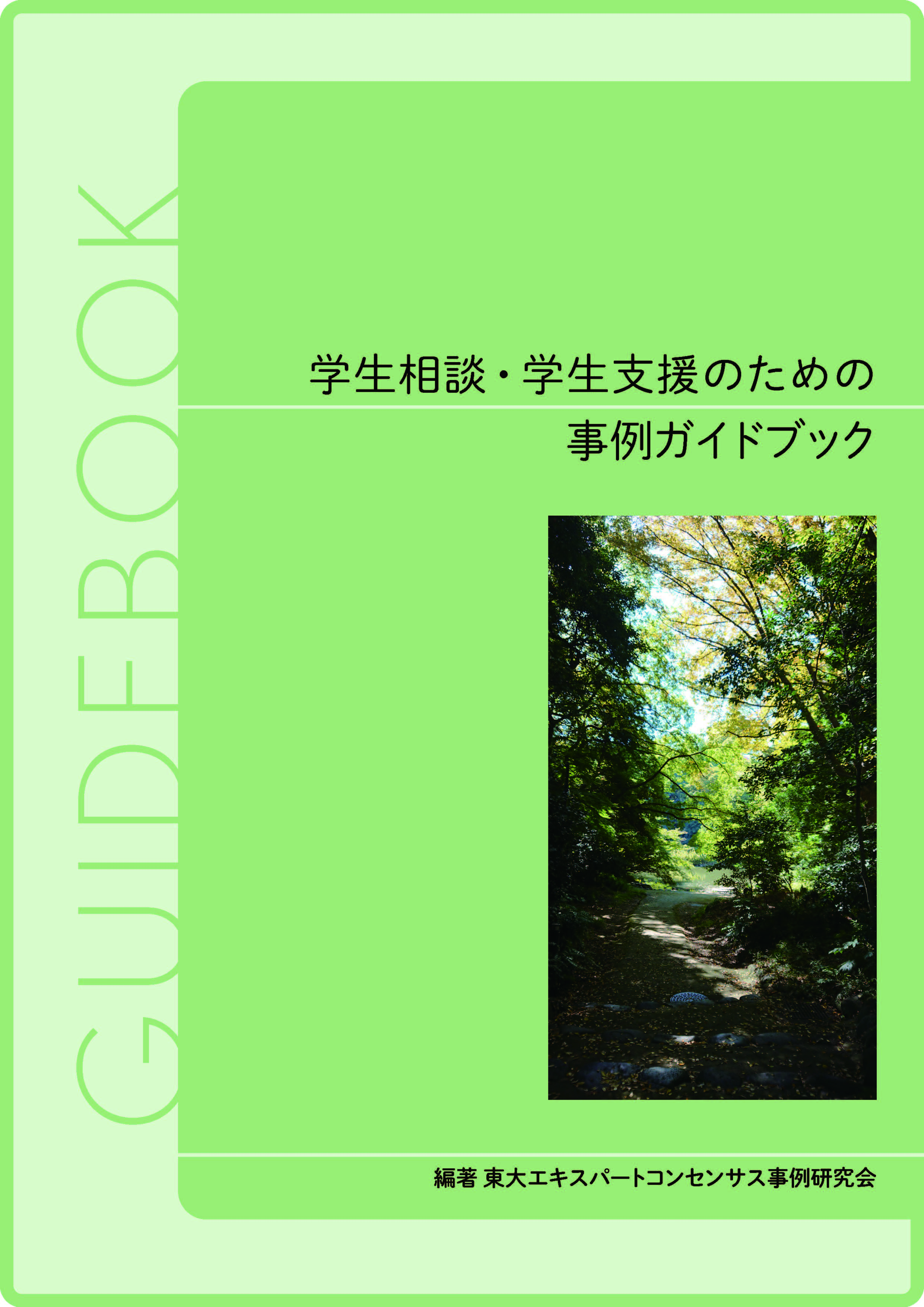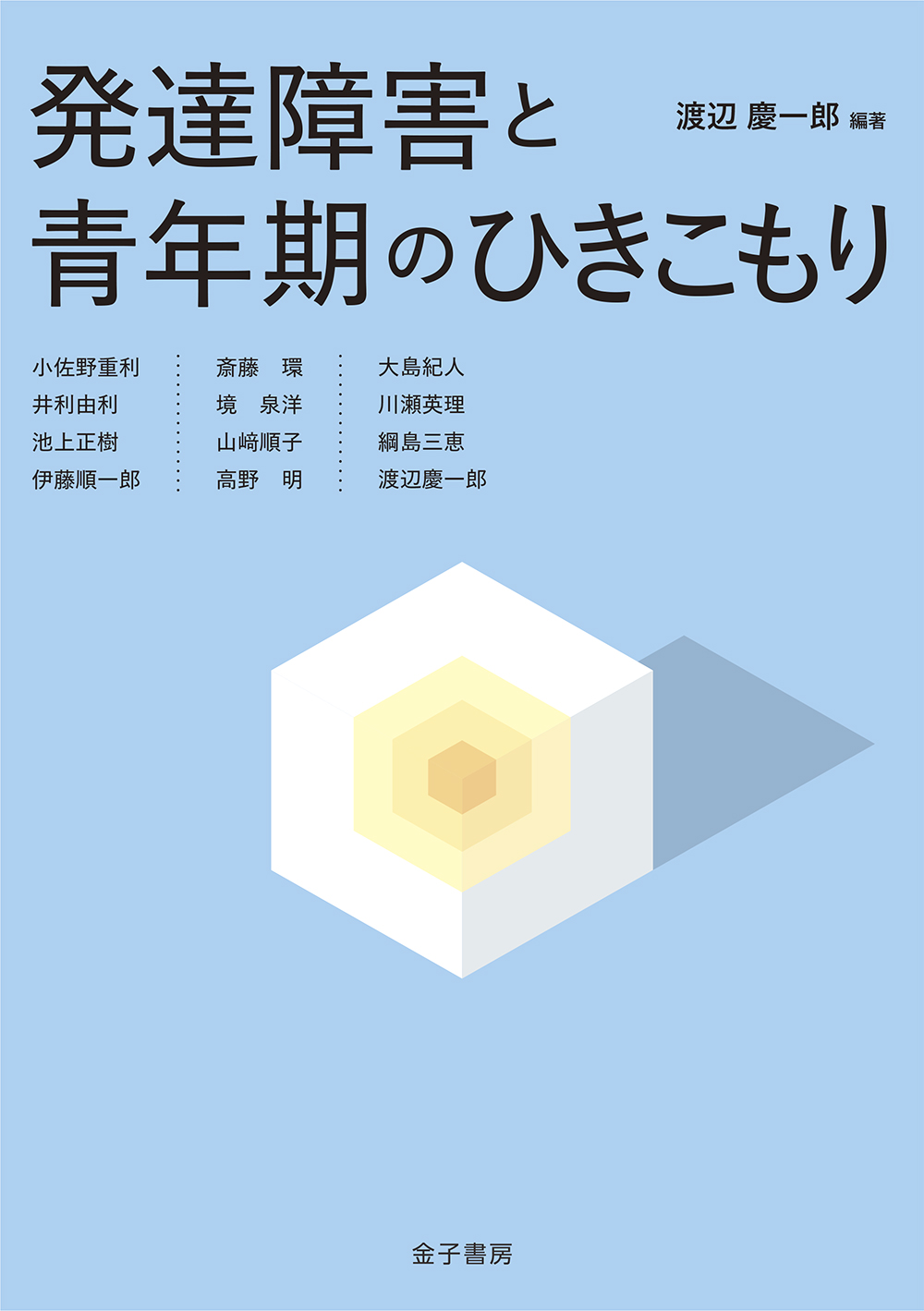
Title
Daigakusei no Stress Management (Stress Management Techniques for University Students - Self-help skills and reciprocal-help skills)
Size
240 pages, 127x188mm, softcover
Language
Japanese
Released
April, 2020
ISBN
978-4-641-17456-6
Published by
Yuhikaku Publishing
Book Info
See Book Availability at Library
Japanese Page
When I talk about counseling university students, a common reaction I get is an incredulous, “University students have stress?” Perhaps people forget. In contrast to the stress they experience as workers in society, peoples’ memories of their university years seem like a dream. Actually, however, just about everyone has struggled to deal with stress at some point during their student years. Some of this stress is simply a necessary part of growing up and can generally be overcome without counseling. But for the student burdened by stress, the experience is a painful one without any recourse to relief. Unable to find answers, some students become depressed and full of anxiety about vague unknowns.
This book is intended for readers who are currently enrolled in a university and buffeted daily by the vagaries of being within an educational institution and of their stage of development as young adults. Our first objective is to teach our readers what it is that is triggering their stress. This book is divided into numerous chapters enumerating specific instances of the situations and events that a student may find stressful. University life is stimulating and interesting because it expands the extent of a student’s activities and brings the student into contact with many people. It also, however, increases a student’s risks. Hopefully, this book will be useful at each of the milestones in a student’s life—entering university, matriculating, and searching for a career upon graduation—when it is time to stop and consider one’s future. This book also provides guidance on how to confront stress, in other words, how to cope with stress. It must be kept in mind, however, that the appropriate techniques for dealing with stress will depend on the nature of the problem and the characteristics of the person experiencing stress. Each chapter offers tips under a section titled, “Simple Exercises for Mental Flexibility.” As is noted in the last chapter, there are times when building relationships that will help you deal with stress is more important than trying to find ways to cope with stress on your own.
One core element of the authors’ research on mental stress and stress management is clinical psychology, and this is evident in the clinical psychology elements to be found throughout this book. Careful consideration was given in writing this book to aspects of developmental psychology that spotlight a student’s interactions with friends, lovers, family, teachers, and coworkers and supervisors, as they develop in young adulthood. This feature, in particular, makes this a suitable introductory text to clinical psychology and developmental psychology as they relate to the actual experiences of university students.
Psychology is still an imperfect science with many unknowns. One, for example, is the psychological effect of the 2020 COVID-19 pandemic. When the authors finished writing this book in 2019, they did not foresee what would happen the following year. Nevertheless, the knowledge imparted by this book should be useful under any conditions. The authors hope that this book will provide hints, not only for dealing with COVID-19 and any future sources of stress, but to foster resilience as well.
(Written by ISHIGAKI Takuma, Professor, Graduate School of Arts and Sciences / 2020)



 Find a book
Find a book


 eBook
eBook

